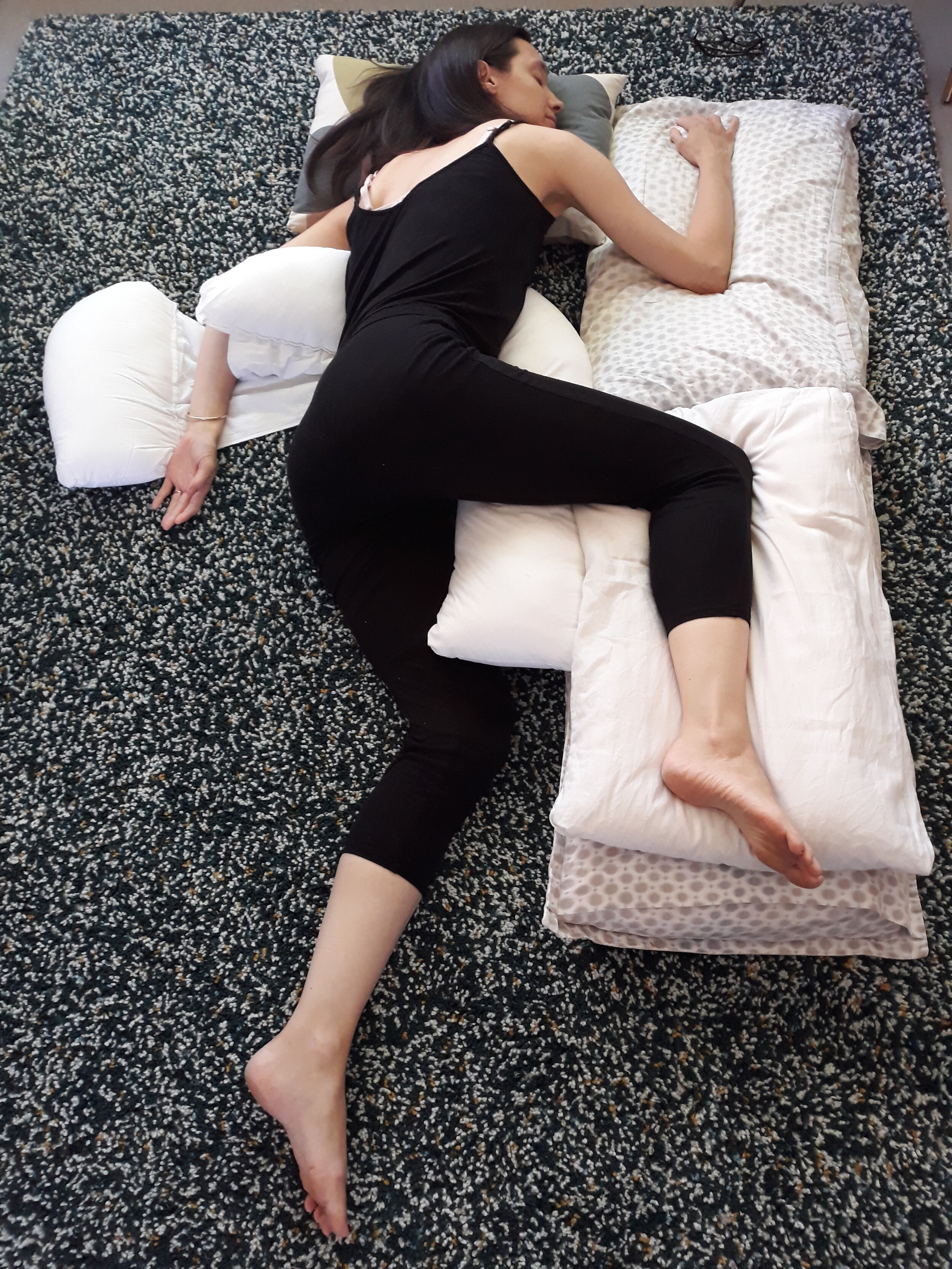Can you sleep on your back while pregnant?
If there's a topic that regularly makes women look at me in disbelief in my pregnancy yoga classes when our end-of-class relaxation time comes , it is the question of rest & sleeping positions in pregnancy, and what is safe or not to do when you are pregnant.
There is a lot of unclear or often partial advice floating out there, and therefore a lot of misconceptions around this topic, which I think often leads to a lot of unnecessary discomfort and anxiety, and which mum-to-be needs that?!
So here is some clarifications on 3 common questions and misconceptions, which might change your nights - and pregnancy - completely!
“I shouldn’t sleep on my back”
Well, this really depends at which stage of your pregnancy you are.
From your third trimester (28 weeks onwards), the recommendation is indeed to go to sleep on your side, as several studies have confirmed a link between going to sleep on your back in late pregnancy and the risk of stillbirth (see Tommy’s Sleep on Side campaign). This is because the weight of your baby/uterus/placenta can compress the blood vessels running along the back of the body and therefore restrict the blood flow to/from your uterus & baby.
Before you reach 28 weeks, you might choose to sleep on your back if it feels comfortable (which it might not!), or you might prefer to get in the habit to go to sleep on your side in preparation for the third trimester.
What’s important to remember here is that the advice is about the position you go to sleep in (as this is likely to be where you remain the longest during your sleep). Do not panic if you wake up lying on your back (you cannot control what you do in your sleep!); simply turn back on your side. Most women find anyway that lying on their back in their third trimester is uncomfortable (which is generally why they do wake up).
It’s also important to know that what was studied there was lying flat on your back during sleep. If you are not comfortable on your side (for example, if you have heartburn or achy hips), sleeping on your back propped up (in reclined sitting) is another safe option.
Finally, know you can also still take a short daytime rest on your back throughout pregnancy if that feels like an appealing thing to do, as long as you elevate your pelvis with a folded blanket or yoga block not to compress the blood vessels running in the lower back (to check, you should be able to slide your hand easily under your lower back).
2. “I should always sleep on my left”
This advice comes hand-in-hand with the advice above, because the blood vessels that run along to back of the body to supply the uterus lie a little to the right of the body. Therefore, lying onto the left-hand side means there is no compression of the blood vessels. There is also an added benefit as lying on the left might be more supportive of kidney function.
This said, there is no evidence that lying on the right-hand side is detrimental. Therefore, the actual advice is to sleep on your left if that’s comfortable, but to sleep on your right, or regularly swap sides if that’s more comfortable for you.
And as above, the research relates to late pregnancy, from 28 weeks of pregnancy.
So there is no point torturing yourself sleeping on your left throughout your pregnancy, especially if it causes you pain and leads you to actually sleep less well. There is more evidence of pregnancy complications due to poor sleep in the weeks leading up to birth.
3. “There is no other option”
It might seem like there isn’t, but there is! 3/4 lying (with a 30 degree angle towards the front or back) is a lovely way to take pressure off the side the hips while still lying on your side and avoiding any compression of the vena cava.
It’s a great modification to get the sensation of sleeping on your back, or on your tummy, while not completely doing so, and might actually turn out to be the most comfortable positions you try!
See below for an illustration of how you could set yourself up with a variety of pillows.
Of course, do not disregard any advice you might have been specifically given by your healthcare professionals. In which case I always recommend you discuss and fully understand these and how they apply to your individual situation so you don’t suffer discomforts or anxiety unnecessarily.
Unsure how to settle yourself in these positions? Struggle to change side while in bed? We cover all these pragmatic, but essential aspects of pregnancy life in my group pregnancy yoga classes in Richmond, London and Kew, London or in my online course! I also offer one-to-one classes in person or online via Zoom if you would like personalised support.


